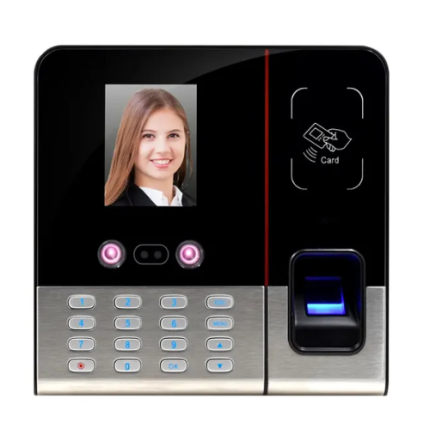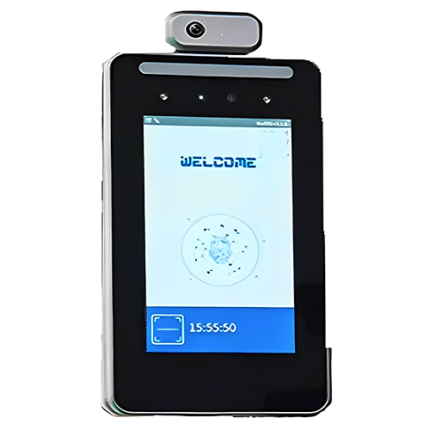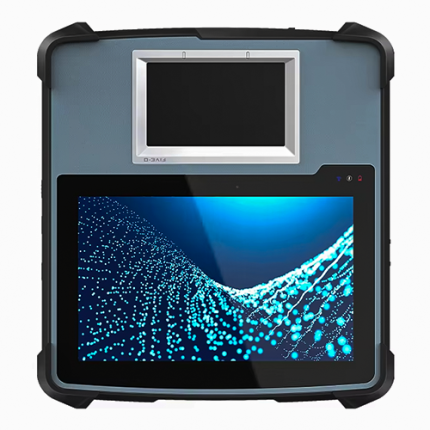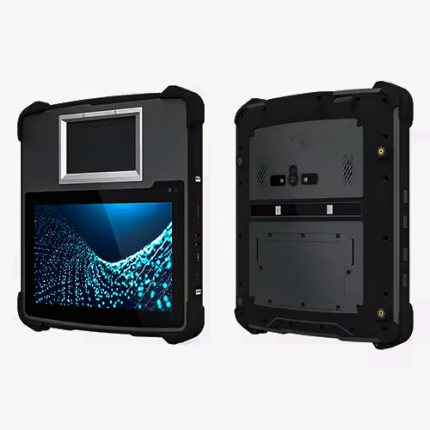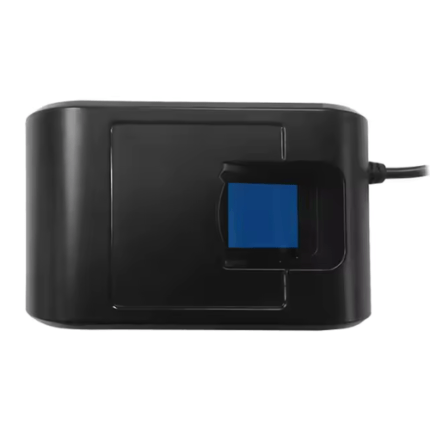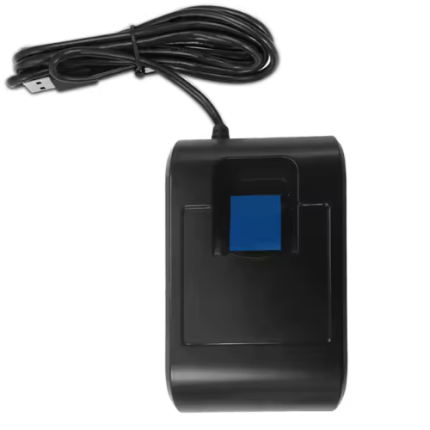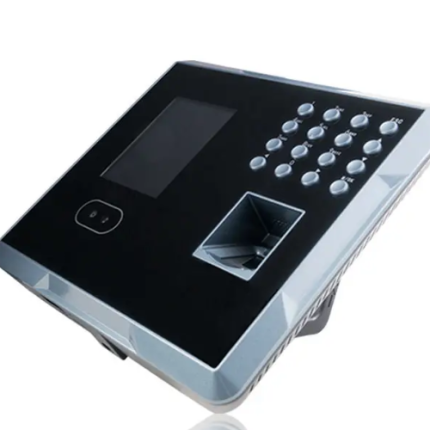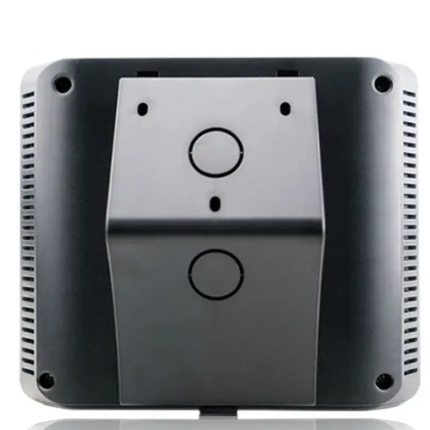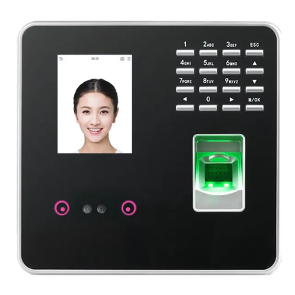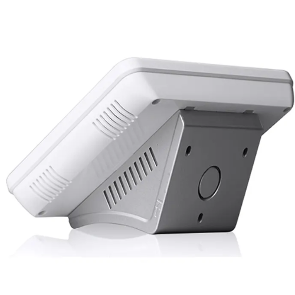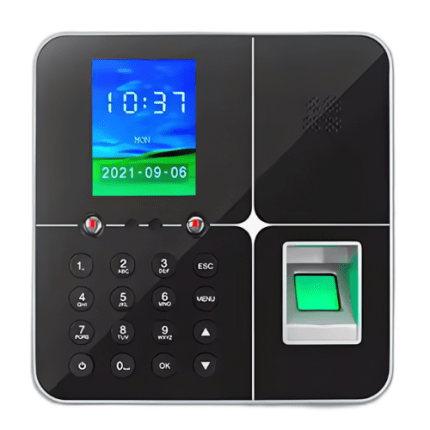Overview
Biometrics-enabled smart airports are revolutionizing the aviation industry by seamlessly integrating advanced identification technologies to enhance security, improve operational efficiency, and deliver a superior passenger experience. These systems utilize innovative biometric tools such as facial recognition, fingerprint scanning, and iris identification to automate processes that were traditionally time-consuming and labor-intensive. From check-in to boarding, biometrics streamline passenger journeys while maintaining the highest levels of security and compliance.
This transformation addresses key challenges in air travel, including long queues, identity verification bottlenecks, and increasing security threats. By automating tasks such as identity checks and boarding, biometrics not only improve efficiency but also allow for a more personalized and stress-free experience for travelers. At the same time, these systems enhance airport operations, enabling staff to focus on critical tasks and reducing overall operational costs.
This guide offers a comprehensive exploration of biometrics-enabled smart airports, starting with foundational insights into biometric technologies and their applications in aviation. It examines the benefits these systems bring, from strengthening security to optimizing workflows and enhancing passenger satisfaction. Readers will also find practical guidance on implementing biometrics, addressing challenges such as privacy concerns, regulatory compliance, and technological limitations.
Furthermore, the guide features real-world case studies of airports that have successfully adopted biometric technologies, providing valuable lessons and best practices. It also delves into emerging trends, such as AI-driven biometric innovations, touchless solutions tailored for a post-pandemic world, and the pursuit of global interoperability standards.
Whether you are a stakeholder seeking to modernize airport operations or a policymaker navigating the complexities of biometric systems, this guide equips you with the knowledge to harness the full potential of biometrics in creating smarter, safer airports.
Below are products and systems related to this webpage:
Our products are in stock and can be shipped to anywhere in continental U.S. or Canada from our local warehouse. To purchase or for any further information, please fill out this form or email us.
We are actively looking for partners who are like us located in the U.S. and Canada. For more information on partnering with GAO, please visit Partner with GAO Tek Inc. It lists various ways to partner with GAO, such as OEM Partnerships, Technology Integration, Distribution and Reselling Opportunities, Presenting at the Leading Event Tek Summit, Joint R&D Projects, Training and Consulting Services, Industry-Specific Collaborations, Research and Academic Partnerships.
1.Introduction to Biometrics in Aviation
Biometrics, the science of recognizing individuals based on unique physical or behavioral traits, has revolutionized numerous industries, including aviation. In the modern context, biometrics integrates advanced technology to create seamless, secure, and efficient systems that enhance passenger experience while strengthening airport security. As a global leader in B2B technology, GAO Tek Inc., headquartered in New York City and Toronto, Canada, is at the forefront of supporting biometrics-driven innovations that reshape the aviation landscape.
Definition and Types of Biometrics
Biometrics refers to the measurement and statistical analysis of people’s physical and behavioral characteristics. These unique identifiers serve as the foundation for identity verification systems in aviation.
Types of Biometrics:
- Physical Biometrics:
Facial Recognition: Analyzes facial features for identity verification.
Fingerprint Scanning: Maps unique ridge patterns on fingers.
Iris Recognition: Examines unique patterns in the iris of the eye.
Hand Geometry: Measures the shape and size of the hand.
- Behavioral Biometrics:
Voice Recognition: Identifies individuals based on vocal patterns.
Keystroke Dynamics: Tracks typing rhythm and speed.
Gait Analysis: Assesses an individual’s walking style.
At GAO Tek, we understand the nuances of these technologies and their applications in high-security environments. With four decades of expertise, we offer customized solutions that integrate these biometric modalities into aviation systems, ensuring both security and passenger convenience.
Historical Context and Evolution
Biometrics in aviation has evolved dramatically over the past two decades. Initially, biometrics was limited to government and military applications. However, as global air travel increased, the need for advanced identity verification became evident.
- Early Adoption (2000s): Fingerprint scanners were introduced at immigration checkpoints to combat identity fraud.
- Technological Advancements (2010s): Airports started deploying facial recognition systems, driven by the need for faster passenger processing.
- Current Trends (2020s): Comprehensive biometric systems, including multi-modal recognition, are now used across boarding gates, lounges, and baggage claims.
Our solutions at GAO Tek leverage this rich history of innovation to provide systems that are not only advanced but also scalable for future demands. Collaborating with prestigious universities and leading R&D firms, we invest heavily in developing biometrics systems tailored for aviation needs.
Relevance to Modern Airports
Airports today are more than transit hubs; they are centers of innovation and efficiency. Biometrics plays a pivotal role in addressing key challenges such as security threats, long queues, and operational inefficiencies.
- Enhanced Security: Biometric systems minimize the risks of identity fraud and unauthorized access, ensuring that only verified passengers proceed through airport zones.
- Streamlined Passenger Flow: Automated biometric gates speed up check-in, security screening, and boarding, reducing congestion.
- Personalized Experiences: Biometrics enable tailored services, such as premium lounge access or duty-free promotions, enhancing passenger satisfaction.
- Regulatory Compliance: Governments worldwide are adopting biometric mandates for aviation security, making it a necessity for modern airports.
At GAO Tek, we enable airports to meet these challenges head-on. Our stringent quality assurance processes and expert support—delivered remotely or onsite—ensure the successful deployment of biometric systems. By collaborating with major government agencies in the U.S. and Canada, we ensure that our solutions align with global aviation standards and regulations.
Visit our website to explore how GAO Tek can transform your airport operations with state-of-the-art biometric systems.
2. Biometric Technologies and Use Cases
In modern aviation, biometric technologies have revolutionized airport operations, enhancing security, improving passenger experiences, and streamlining operational efficiency. Below, we explore key biometric systems and their practical applications in smart airports.
Facial Recognition Systems
Facial recognition technology plays a pivotal role in enabling seamless identity verification across various touchpoints within an airport. By using advanced algorithms to map facial features, these systems match passengers’ identities against databases for authentication.
Applications in Airports:
- Check-In and Boarding: Facial recognition kiosks expedite check-ins and boarding processes by matching passengers’ facial biometrics with their travel documents.
- Security Screening: It reduces manual intervention in identity verification, enhancing accuracy and throughput.
- Immigration and Customs Clearance: Biometric e-gates streamline international arrivals and departures.
At GAO Tek Inc., we specialize in providing advanced facial recognition solutions, backed by four decades of R&D and stringent quality assurance processes. Our systems are tailored to meet the needs of airports striving to enhance passenger flow and compliance with regulatory requirements.
For a deeper understanding of facial recognition, refer to NIST’s guide on facial biometrics.
Fingerprint and Iris Scanning
Fingerprint and iris scanning are among the most reliable biometric modalities, offering unparalleled accuracy. These technologies capture unique physiological patterns, enabling robust identification for both passengers and airport personnel.
Applications in Airports:
- Employee Access Control: Ensures restricted areas remain secure by granting access only to authorized personnel.
- Passenger Verification: Acts as an alternative or complement to facial recognition for authentication.
- VIP Lounge Access: Streamlines the identification of premium passengers.
GAO Tek offers cutting-edge fingerprint and iris scanning devices designed for rapid deployment in high-traffic environments. Our robust solutions cater to the security and operational needs of airports worldwide, including compliance with stringent aviation standards.
For further reading, consider ICAO’s document on iris recognition.
Voice Recognition Applications
Voice recognition technology, though less prevalent in aviation compared to other biometrics, holds significant promise in enhancing customer interactions and operational workflows. By analyzing unique vocal patterns, this technology facilitates both identity verification and process automation.
Applications in Airports:
- Contactless Check-Ins: Passengers can use voice commands to complete check-in formalities or retrieve flight information.
- Customer Support: Virtual assistants equipped with voice biometrics can provide personalized travel assistance.
- Authentication for Call Centers: Verifies passengers’ identities during phone-based interactions with airlines or airport services.
GAO Tek integrates voice recognition into smart airport ecosystems, leveraging its extensive expertise in advanced technology deployment. Our solutions are scalable and adaptable to evolving airport requirements, ensuring enhanced operational efficiency.
Explore the potential of voice biometrics with resources like IEEE’s insights on voice recognition technologies.
GAO Tek Inc., headquartered in New York City and Toronto, Canada, is committed to transforming airports through state-of-the-art biometric systems. Trusted by Fortune 500 companies, government agencies, and leading research institutions, we deliver reliable and innovative technologies that set new benchmarks in aviation.
3.Key Benefits of Biometric Systems in Airports
Enhanced Security
Biometric systems bring a revolutionary approach to airport security, surpassing traditional methods like ID checks and manual document verification. By leveraging technologies such as facial recognition, iris scanning, and fingerprint verification, airports can accurately confirm a traveler’s identity in real-time. This minimizes the risk of human error, forgery, or impersonation.
With increasing global security threats, biometric systems add a robust layer of defense. They enable seamless integration with national and international security databases, helping authorities identify high-risk individuals swiftly. At GAO Tek Inc., headquartered in New York City and Toronto, Canada, we supply cutting-edge biometric solutions that ensure compliance with the most stringent security regulations. Our expertise extends to providing scalable systems capable of accommodating millions of passengers annually.
By implementing advanced biometric systems like those offered by GAO Tek, airports can bolster passenger confidence and strengthen their role as secure transportation hubs.
Streamlined Passenger Experience
Biometric technology transforms the passenger journey from check-in to boarding into a seamless, touchless experience. Travelers can enjoy faster check-ins, as facial recognition systems automatically validate their identities and match them with their boarding passes. Similarly, security checkpoints become less intrusive and more efficient with the automation of identity verification processes.
For frequent travelers and first-time flyers alike, this frictionless journey minimizes wait times and enhances convenience. GAO Tek’s biometric solutions are designed to integrate effortlessly into existing airport infrastructure, ensuring a smooth deployment process. With nearly four decades of experience serving leading R&D firms, Fortune 500 companies, and government agencies, GAO Tek understands the importance of delivering systems that prioritize user satisfaction.
Operational Efficiency
Airports face constant pressure to handle increasing passenger volumes while maintaining high service standards. Biometric systems address this challenge by optimizing resource allocation and reducing operational bottlenecks. Automation reduces dependency on manual labor, enabling staff to focus on critical tasks requiring human intervention.
Real-time data collection and analytics, enabled by biometrics, empower airports to predict and respond to peak traffic patterns efficiently. This translates into better gate management, improved flight schedules, and enhanced overall operational performance.
At GAO Tek, our biometric technologies are tailored to maximize efficiency while meeting the unique demands of airport environments. As part of GAO Group, which includes GAO Research Inc. and GAO RFID Inc., we bring a wealth of expertise in developing advanced systems supported by rigorous quality assurance processes.
By adopting GAO Tek’s biometric solutions, airports can not only enhance their operational efficiency but also reduce costs, ensuring sustainable growth in the aviation industry.
For more details on biometric advancements, consider exploring resources from industry leaders like IATA or the Transportation Security Administration (TSA).
4. Implementation Roadmap for Biometrics in Smart Airports
Infrastructure Requirements
A successful implementation of biometrics in airports demands a robust infrastructure that aligns with both operational efficiency and stringent security standards. At GAO Tek Inc., we understand the intricacies involved and provide the advanced technologies required to ensure seamless operations.
Key infrastructure components include:
- Biometric Hardware: High-precision devices like facial recognition cameras, fingerprint scanners, and iris recognition systems. GAO Tek offers cutting-edge biometric equipment designed for fast, accurate identification.
- Data Storage and Processing: Airports require high-capacity, secure data storage systems to manage vast amounts of passenger biometrics. Our solutions are optimized for high scalability and compliance with international data protection regulations.
- Network Connectivity: High-speed, reliable networks are essential for real-time data exchange between biometric systems, airline databases, and border control agencies.
- Cybersecurity Measures: Given the sensitive nature of biometric data, robust cybersecurity infrastructure, such as encrypted data transmission and AI-driven threat detection, is crucial. GAO Tek provides comprehensive cybersecurity solutions to protect these critical systems.
Integration with Existing Airport Systems
Integrating biometric solutions into existing airport systems requires a multi-layered approach to ensure compatibility and interoperability. GAO Tek specializes in seamless integration processes to minimize operational disruptions.
- Passenger Processing Systems: Biometric systems must integrate with check-in kiosks, baggage handling, and boarding gates to create a unified passenger experience.
- Airline Databases: Collaboration with airlines is critical to ensure passenger data synchronization. GAO Tek facilitates secure API connections for real-time data sharing.
- Government Systems: Compliance with immigration and customs requirements necessitates integration with national and international government systems. Our expertise ensures adherence to regulatory standards such as ICAO DOC 9303 for Machine-Readable Travel Documents.
- Legacy Systems: Airports often operate a mix of old and new systems. GAO Tek’s innovative middleware solutions bridge this gap, enabling new biometric technologies to function alongside legacy systems.
Deployment Phases
Deploying biometric systems in airports is a complex process that unfolds in clearly defined phases. GAO Tek’s proven methodologies guide airports through each step of this transformation.
- Planning and Assessment
Conduct a comprehensive needs analysis to identify specific biometric applications.
Evaluate current infrastructure and identify upgrade requirements.
Collaborate with stakeholders to define clear objectives and key performance indicators (KPIs).
- Pilot Testing
Implement pilot programs at select touchpoints (e.g., check-in or boarding gates).
Test system performance, passenger experience, and operational workflows.
Gather feedback for iterative improvements.
- Full-Scale Deployment
Roll out biometric systems across all identified touchpoints.
Train staff on system usage and passenger support.
Implement real-time monitoring systems to ensure smooth operations.
- Post-Deployment Maintenance
Perform regular system audits to maintain accuracy and reliability.
Update software and hardware to keep pace with evolving technologies.
Provide ongoing training for airport personnel to adapt to system upgrades.
By leveraging GAO Tek’s expertise in advanced B2B technologies, airports can confidently navigate the complexities of biometric system deployment. With nearly four decades of experience, we provide comprehensive support to ensure that each phase is executed with precision. Our commitment to quality and innovation has earned us the trust of Fortune 500 companies and prestigious institutions across North America.
For more information, visit our GAO Tek website.
5.Challenges and Considerations in Biometric-Enabled Smart Airports
Privacy and Data Security Concerns
Implementing biometric systems in airports involves capturing and storing sensitive personal information such as facial images, fingerprints, and iris scans. Protecting this data is paramount, as breaches can lead to identity theft or misuse of personal data.
GAO Tek Inc., headquartered in New York City and Toronto, Canada, provides advanced solutions to secure biometric data through encryption, secure transmission protocols, and robust access controls. Our systems adhere to stringent privacy standards, ensuring compliance with global regulations. By leveraging our expertise, airports can confidently implement biometric technologies without compromising passenger privacy.
Airports must also prioritize transparency, informing passengers about data usage, storage, and protection measures. GAO Tek supports these efforts by offering consultancy on integrating biometric systems with user-friendly privacy notices and consent mechanisms.
Regulatory and Legal Compliance
Biometric deployments in airports are subject to numerous regulations, including GDPR in Europe, the CCPA in California, and other international and regional laws. Compliance is non-negotiable, as non-compliance can result in hefty fines and reputational damage.
GAO Tek has decades of experience helping clients in the U.S., Canada, and beyond navigate complex regulatory landscapes. Our technologies are designed to be compliant out of the box, with features such as data anonymization, retention policies, and audit trails. Additionally, we provide expert support to ensure that airport operations align with legal requirements, even as regulations evolve.
Collaborating with authorities and understanding jurisdictional requirements is crucial for successful implementation. GAO Tek offers tailored solutions to meet the unique compliance needs of each airport, minimizing legal risks while maximizing operational efficiency.
Technological Barriers
Adopting biometric systems in airports comes with technological challenges, including interoperability with legacy systems, scalability to handle millions of passengers, and ensuring real-time processing for smooth passenger flow. Additionally, maintaining high accuracy in diverse environmental conditions such as varying lighting and crowded terminals can be challenging.
GAO Tek specializes in developing cutting-edge, scalable biometric systems that integrate seamlessly with existing airport infrastructure. Our solutions are built to handle high volumes of data and ensure near-instantaneous authentication, even during peak travel times. With decades of R&D and quality assurance, GAO Tek delivers systems optimized for the demanding conditions of modern airports.
Moreover, our technical support teams, available remotely or onsite, work closely with clients to address implementation challenges, fine-tune system performance, and ensure long-term reliability. GAO Tek’s commitment to innovation ensures that airports stay ahead of technological obstacles while delivering a superior passenger experience.
By addressing these challenges and considerations, GAO Tek empowers airports to confidently transition into the future of biometrics-enabled operations, ensuring secure, compliant, and efficient solutions.
6.Case Studies and Global Best Practices
Notable Biometric-Enabled Airports
Biometric technologies are transforming airport operations worldwide. These advancements improve passenger experiences, enhance security, and increase operational efficiency. Below are some globally recognized examples:
- Hamad International Airport, Doha, Qatar
Doha’s Hamad International is a leader in biometric implementation. Using facial recognition and iris scanning, it offers passengers seamless check-in, boarding, and immigration processes, significantly reducing wait times.
- Singapore Changi Airport, Singapore
Changi integrates facial recognition into its automated immigration gates and boarding processes. Its state-of-the-art Jewel terminal uses biometrics for enhanced retail and leisure experiences.
- Los Angeles International Airport (LAX), USA
LAX has adopted biometric boarding gates for international flights. Facial recognition technology speeds up boarding, with improved accuracy and security.
- Amsterdam Schiphol Airport, Netherlands
Amsterdam Schiphol combines biometric check-in, baggage drop, and boarding, providing a completely touchless passenger journey.
- Beijing Daxing International Airport, China
Known as the world’s largest single-building airport terminal, Beijing Daxing employs facial recognition at every passenger touchpoint, from check-in to boarding.
Lessons from Early Adopters
Early adopters of biometric systems highlight critical lessons for successful implementation:
- Pilot Testing and Scalability
Airports like LAX and Atlanta Hartsfield-Jackson have shown that small-scale pilot projects are crucial before expanding systems across terminals.
- Compliance with Privacy Regulations
European airports like Heathrow emphasize adherence to stringent data protection laws, such as GDPR, ensuring passenger trust and compliance.
- Investment in Infrastructure and Training
The successes at Singapore Changi underscore the need for advanced IT infrastructure and thorough staff training to handle biometric systems effectively.
- Partnerships with Tech Experts
Airports like Dubai International collaborate with global tech leaders to integrate cutting-edge solutions seamlessly.
- Passenger Education
Educating passengers about biometric systems, as seen in Hong Kong International Airport, minimizes apprehension and fosters smooth adoption.
GAO Case Studies
USA
- Atlanta, GA
GAO Tek assisted in implementing an airport-wide facial recognition system, streamlining immigration and reducing queues significantly.
- San Francisco, CA
Deployed cutting-edge biometric boarding gates, enhancing passenger throughput for international departures.
- New York, NY
Implemented multi-modal biometric systems, including facial and fingerprint recognition, optimizing passenger security.
- Miami, FL
Introduced biometric-enabled kiosks for self-service check-in, improving operational efficiency.
- Chicago, IL
Supported biometric baggage drop systems to expedite the check-in process.
- Dallas, TX
Partnered in creating a facial recognition boarding system for domestic and international flights.
- Denver, CO
Enhanced security measures by deploying advanced biometric verification systems for staff and passengers.
- Seattle, WA
Integrated iris scanning technology for VIP lounges and expedited immigration services.
- Orlando, FL
Worked on a biometric pilot program, focusing on facial recognition for international arrivals.
- Phoenix, AZ
Designed a biometric solution for airport security, enabling seamless passenger identity verification.
- Boston, MA
Implemented biometric boarding gates, significantly reducing boarding times.
- Houston, TX
Advanced facial recognition systems were introduced to improve customs and border control processes.
- Las Vegas, NV
Assisted in installing biometric-enabled kiosks for enhanced passenger interaction.
- Salt Lake City, UT
Supported the integration of fingerprint scanning systems for airport staff authentication.
- Charlotte, NC
Deployed multimodal biometric systems to enhance terminal security and operational efficiency.
Canada
- Toronto, ON
Developed facial recognition-based self-boarding gates, improving passenger throughput during peak hours.
- Vancouver, BC
Assisted in implementing multi-modal biometrics for check-in, security, and boarding, enhancing the overall passenger experience.
At GAO Tek Inc., we leverage decades of expertise to provide tailored biometric solutions for airports, enhancing security, efficiency, and passenger satisfaction. Headquartered in New York City and Toronto, our extensive R&D and quality assurance ensure innovative, reliable systems for our clients worldwide. Learn more about our offerings on GAO Tek’s website.
7.Future Trends and Innovations in Biometrics for Smart Airports
As the aviation industry embraces biometric technology for enhanced passenger experiences and security, several emerging trends and innovations are shaping the future of biometrics in airports. These developments promise to further revolutionize airport operations, streamline travel, and offer safer, more efficient services to travelers worldwide.
AI and Machine Learning in Biometrics
Artificial Intelligence (AI) and Machine Learning (ML) are pivotal in advancing biometric systems. These technologies enable systems to continuously learn and improve, increasing their accuracy and efficiency over time. AI-powered biometrics, including facial recognition, fingerprint scanning, and iris recognition, leverage ML algorithms to enhance identity verification. AI-driven biometric systems can process vast amounts of data in real-time, providing quick and accurate identification even in large, crowded environments like airports.
GAO Tek Inc. recognizes the potential of AI and ML in biometrics, and our R&D efforts are focused on integrating these technologies into our biometric solutions. By leveraging cutting-edge AI algorithms, GAO Tek enhances the accuracy of biometric authentication systems, reduces false positives and negatives, and improves the overall passenger experience. As a leader in advanced B2B technologies, GAO Tek is at the forefront of deploying these innovations in smart airports worldwide.
Touchless Solutions and Pandemic Preparedness
The global pandemic has accelerated the adoption of touchless solutions in airports to reduce the risk of disease transmission. Touchless biometric systems, such as facial recognition and iris scanning, allow for seamless and safe identity verification without physical contact. These systems improve health and safety while maintaining high operational efficiency.
GAO Tek’s touchless biometric solutions are designed with pandemic preparedness in mind, providing airports with the technology needed to enhance public health protocols. By offering non-invasive, contactless security measures, our solutions help airports safeguard both passengers and staff. Additionally, touchless biometrics support faster processing times, reducing congestion and ensuring smooth travel experiences, even in high-traffic periods.
Interoperability and Global Standards
As biometric systems become more widespread in airports globally, the need for interoperability and standardized protocols has become increasingly crucial. The ability to share and cross-reference biometric data across different systems, countries, and service providers is key to ensuring a seamless travel experience for passengers. Global standards for biometric data exchange are essential for maintaining privacy, security, and data integrity.
GAO Tek is committed to supporting interoperability in the biometric ecosystem. Our solutions are designed to be compatible with various international standards and work across different platforms, providing airports with flexible and scalable systems that can integrate seamlessly with existing infrastructure. As part of GAO Group, we continue to collaborate with industry leaders, governments, and organizations to help shape and adhere to global standards, ensuring that biometric technology can be adopted globally while maintaining privacy and security.
At GAO Tek, we understand the importance of these future trends in biometrics, and we are proud to be a key player in driving innovation within the industry. Our advanced biometric technologies and commitment to R&D ensure that airports can deliver a safe, efficient, and seamless travel experience for passengers worldwide.
8. Appendix
Glossary of Terms
- Biometrics: The measurement and statistical analysis of people’s unique physical and behavioral characteristics, used primarily for identification and access control.
- Facial Recognition: A biometric system that identifies individuals by analyzing facial features, typically used for airport security and passenger verification.
- Fingerprint Recognition: A biometric technique for identifying individuals by matching the unique patterns in their fingerprints.
- Iris Scan: A biometric method of identifying individuals based on the unique patterns in the colored part of the eye.
- Smart Airports: Airports that integrate cutting-edge technologies, including biometrics, to enhance the passenger experience and streamline operations.
- Clearance Level: The access permission granted to individuals within the airport environment, often involving biometric identification for secured zones.
- Biometric Authentication: The process of verifying a person’s identity using their biometric data, often utilized for access control and identification.
- Passenger Flow Optimization: The use of technology to streamline passenger movement throughout the airport, including biometric systems to reduce delays and improve operational efficiency.
- Privacy-by-Design: A principle that ensures privacy is embedded into the system’s design, often used in reference to biometric systems that protect passenger data.
- Tokenization: The process of converting sensitive data into a non-sensitive equivalent (token), often used to secure biometric data.
Relevant Regulations and Standards
- General Data Protection Regulation (GDPR): A regulation in EU law that governs data protection and privacy in the European Union. It emphasizes the importance of protecting biometric data and ensuring privacy when using biometric systems at airports.
- Biometric Information Privacy Act (BIPA): A U.S. state-level law in Illinois that requires companies to obtain consent before collecting biometric data, ensuring transparency in its usage.
- ISO/IEC 27001: An international standard for managing information security. It provides guidelines for safeguarding biometric data collected at airports.
- ISO/IEC 19794-5: An international standard for biometric data interchange formats, ensuring consistency and interoperability of biometric systems, including those used in airports.
- Federal Aviation Administration (FAA) Regulations: U.S. governmental rules that impact biometric systems used in airport security, including the implementation and operation of identity verification systems.
- National Institute of Standards and Technology (NIST) SP 800-76: A guideline by NIST that defines biometric data standards in identification and authentication, critical for maintaining uniformity in biometric airport systems.
- Passenger Service Systems (PSS) Standards: Guidelines that cover the operation of airport services, including passenger identification and biometric integration.
- Health Insurance Portability and Accountability Act (HIPAA): While primarily related to healthcare, HIPAA’s principles of data privacy can apply to biometric systems handling medical data for passengers with special needs at airports.
- U.S. Customs and Border Protection (CBP): Sets standards for biometric systems used in immigration control and border security, including facial recognition for entry and exit procedures.
Additional Resources
- International Air Transport Association (IATA): As an international trade organization, IATA offers resources on the use of biometrics in aviation, including best practices, standards, and technology trends.
- National Institute of Standards and Technology (NIST): NIST provides comprehensive reports and standards on biometric technologies, including research on facial recognition accuracy and performance metrics.
- GAO Tek Inc. Solutions: GAO Tek Inc. offers state-of-the-art biometric solutions for smart airports, including facial recognition and fingerprint scanning systems designed for seamless passenger flow and enhanced security.
- Biometric Institute: A global organization promoting the responsible use of biometrics, offering insights on policies, privacy concerns, and guidelines for deploying biometric systems in airports.
- U.S. Department of Homeland Security (DHS): DHS provides resources on how biometric technologies are implemented in U.S. airports for passenger security and immigration control.
- European Union Agency for Cybersecurity (ENISA): ENISA offers detailed reports on the cybersecurity aspects of biometric systems, crucial for safeguarding data at airports that use biometric authentication.
- World Customs Organization (WCO): WCO provides resources and guidelines on the application of biometric technology at international borders, which can help airports manage customs processes effectively.
By incorporating biometric systems, such as those offered by GAO Tek Inc., airports can enhance security and passenger experience while adhering to industry standards and regulations. We are proud to be a trusted partner in the development of smart airports, providing cutting-edge technology solutions that comply with international regulations and standards.
Here are the Biometrics Devices offered by GAO Tek:
Attendance Card Punch ID & Face Recognition System – GAOTek
Attendance Fingerprint Access Control Facial Recognition – GAOTek
Automatic 7 Inch Non Contact Face Recognition Terminal – GAOTek
Biometric Data Capture Device with Fingerprint Recognition – GAOTek
Biometric Device USB Fingerprint Scanners – GAOTek
Biometric Fingerprint Face Recognition Attendance Machine – GAOTek
Biometric Fingerprint Face Recognition Employee Attendance – GAOTek
Biometric Fingerprint Recognition Machine – GAOTek
Navigation Menu for Biometrics
- Biometric Accessories
Navigation Menu for IoT
Our products are in stock can be shipped to anywhere in continental U.S. or Canada from our local warehouse. To purchase or for any further information, please fill out this form or email us.
We are actively looking for partners who are like us located in the U.S. and Canada. For more information on partnering with GAO, please visit Partner with GAO Tek Inc. It lists various ways to partner with GAO, such as OEM Partnerships, Technology Integration, Distribution and Reselling Opportunities, Presenting at the Leading Event Tek Summit, Joint R&D Projects, Training and Consulting Services, Industry-Specific Collaborations, Research and Academic Partnerships.



